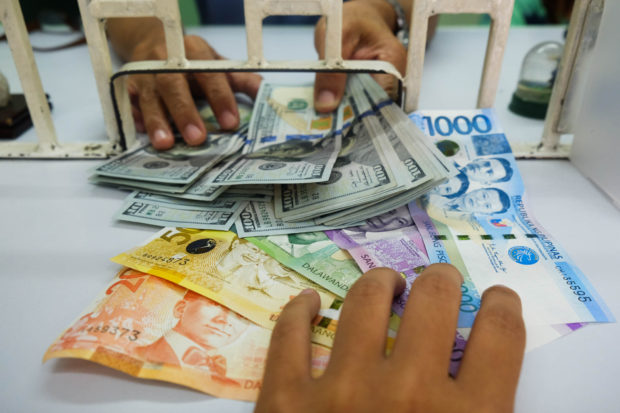Peso remains second weakest currency in Asia
Global investment banking giant Goldman Sachs has turned “bearish” on the Philippine peso due to the rising COVID-19 cases in the country and the local currency’s current weakness against the US dollar.
In a report last week, Goldman Sachs noted that the peso weakened against the greenback by about 7 percent between June and mid-August.
This made the peso the second-worst performing currency in Asia (except Japan)—next to the Thai baht—in the last two to three months, it said.
Coming into this year through June, Goldman Sachs observed that the foreign exchange market—including offshore funds, interbank players and corporations— had been mostly favoring the peso against the US dollar, given the strong performance of the local currency in 2020. It was one of the best performing currencies in the region last year as import spending dwindled in line with sluggish economic activities during the pandemic, while the government’s offshore borrowings boosted foreign inflows.
But the US Federal Reserve’s signal that it will unwind its monetary stimulus earlier than expected—which means US interest rates are bound to rise—reinvigorated the US dollar. Those who earlier took on heavy short (sell) US dollar positions scrambled to unwind them, Goldman Sachs suggested.
“Consequently, the peso-to-dollar rate moved from 47.50 to 50.50 in two months. The pair appears to have stabilized now, and we think the BSP (Bangko Sentral ng Pilipinas) may be tempted to smooth further sharp moves,” it added.
On top of this, Goldman Sachs pointed to the sharp increase in new COVID-19 infections to about 13,000 daily from 8,000 in early August. On Friday, new coronavirus cases hit a record-high of 17,231.
Also, Goldman Sachs said “the vaccination rate remains relatively low at 13 percent” of the population.
“However, as and when COVID-19 cases ease, mobility restrictions are relaxed and the economy reopens, then we would expect the peso to resume its underperformance vs non-Japan Asian peers,” Goldman Sachs said.
Goldman Sachs noted that last year, the peso overperformed in the region as the most stringent lockdowns imposed in the Philippines slashed demand for imported capital goods and raw materials, which were paid in dollars, hence the current account swung into a surplus equivalent to 3.6 percent of gross domestic product.
It had also helped the peso that “corporate dollar bond issuance was hefty in 2020 at $6 billion compared to $4 billion in 2019 … because offshore borrowing costs narrowed amid the decline in US yields,” Goldman Sachs said. INQ

